dungeonlearningcurve
76 posts
Being a blog in which I document my adventures in Dungeons & Dragons
Don't wanna be here? Send us removal request.
Text
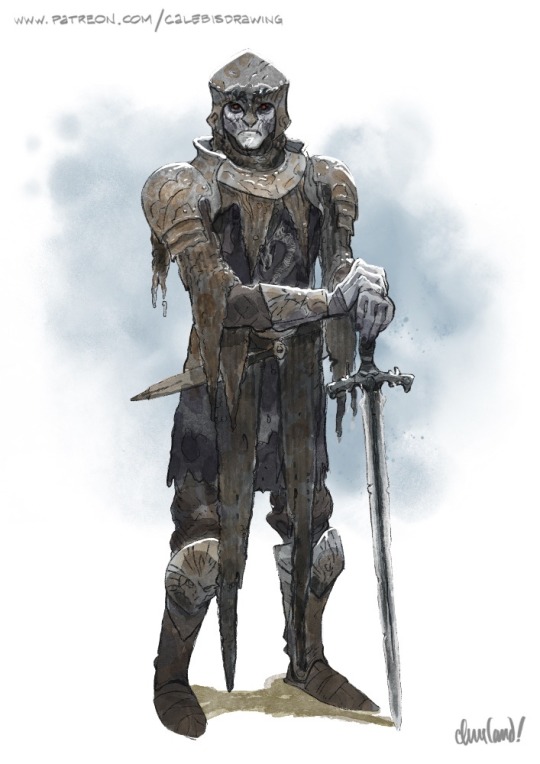
A Barovian revenant.
@procreateapp watercolor brushes by @maxulichney.
163 notes
·
View notes
Text

him again
133 notes
·
View notes
Text
I've been in a Curse of Strahd game for a few months now and it's going fantastic. We are experiencing The Horrors.
4 notes
·
View notes
Text
A TPK is basically a failure state for the whole group in an action-oriented tabletop RPG, especially one where there is an extended narrative being told. A TPK means that the game ends for everyone. The whole group has to make a whole new party and start again.
It’s an acceptable failure state in a traditional challenge game. You simply roll up a new character or flesh out one of your named followers. Lots of older school challenge games even have rules supporting some type of inheritance, where players can put some amount of money aside to be transferred to a new character in the event of their current character’s death.
But a TPK isn’t a desired outcome in a game that uses a challenge game engine but tries to have an extended narrative. Because a TPK means the continuity of characters involved in the narrative is broken.
I think this leads to a perverse incentive where these games make overcoming obstacles, especially lethal ones, into the most fun activity, but if a group wants to use the game as a platform for story-telling beyond “a bunch of adventurers try to get rich by doing dangerous shit” then the person running the game is encouraged to run encounters that have the appearance of being dangerous encounters, but they can’t actually ever be too dangerous.
And I mean the fact that creating characters in lots of these types of games requires a number of elaborate steps means that there is a further disincentive to actually kill off characters.
The arduous process of character creation runs counter to a challenge game when systems only support death as a failure state. But if the game is being used to tell an extended narrative then there are many incentives in place for the GM not to actually challenge the players lethally, but because combat is often the most interesting part of gameplay it means that low-stakes narratively unfulfilling combat often become the norm. And once players grow wise to the fact that their characters’ survival is required for the sake of narrative continuity it destroys a lot of tension.
Of course there would be various ways to address this but I’m unsure whether these will ever be popularized:
Not treating death as the only failure state, even in combat.
Being explicit in your design goals, i.e. should the primary mode of engaging with the game be to engage in challenges or to tell an extended narrative that sometimes include action scenes.
Treating failure in action scenes as not a Game Over, but a potential story branch.
There isn’t a one size fits all solution to these issues. A lot of these I feel arise from tradition and the fact that certain assumptions of RPGs have gone unexamined even as playstyles have changed. And this isn’t an universal issue: I feel Break!! (a newer adventure RPG with a very traditional structure) averts some of these issues both through having failure states beyond death and having relatively straightforward character creation, so even in the event of death making a new character isn’t a huge hurdle. But in general I feel lots of RPG designers working on traditional action-oriented games where death is the only major failure state neglect to think about these things
634 notes
·
View notes
Text
i found a website where you can make your own achievements for dnd :)

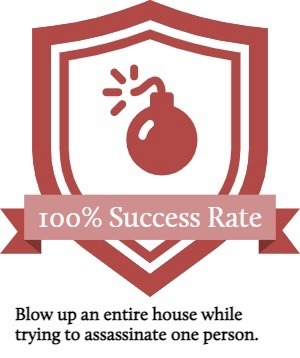


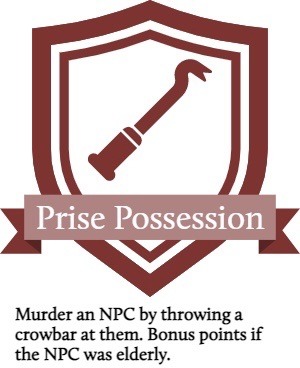


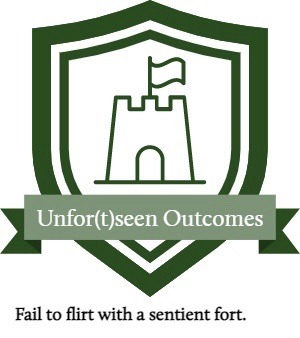
these are the ones i made (minus carl, ehich was made by one of my dms)
4K notes
·
View notes
Video
Size comparison of Y’gathok, the Ceaseless Hunger and Bjorn, our level 20 Goliath Barbarian.
429K notes
·
View notes
Text
dnd idea: an 8-ball but it has a d20 in it so you have to shake it and the d20 rises out of the murky liquid to decide your fate
227K notes
·
View notes
Text
How to Play as Aurora in DnD 5e

Aurora is the protagonist of Disney’s 1959 animated classic Sleeping Beauty. Despite having very little screen time, only appearing for 18 minutes of the entire screen time, and havine one of the fewest number of lines in a Disney film, Aurora is surprisingly easy to mold onto a Dungeons and Dragons character in 5th edition, and the updates provided by Tasha’s Cauldron of Everything only made it easier. So, let’s take a Garland Waltz through the glen in the forest to see how Aurora can be played in 5th Edition Dungeons and Dragons.
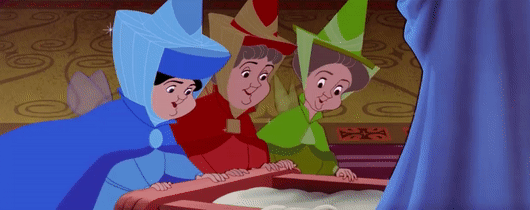
For her race, Aurora is not an ordinary human. She was given three fey gifts and a curse on the day of her christening. That magic would have altered Aurora making her a Variant Human. From Flora’s gift of Beauty, we’ll give her +1 Charisma, and from Flaura’s gift of song, we’ll use her free skill to give her proficiency with Performance checks. For her second stat, we’ll increase her Wisdom by +1. For her free feat, the Fey Touched feat is what makes her a Variant Human. She gains +1 to her Wisdom score, and adds the spells Misty Step and one 1st level enchantment or divination spell of her choosing. Command, Heroism, and Sleep are three appropriate spells she can’t get from her spell list.

For Aurora’s background, there’s a bit of uncertainty. She is a princess, making an easy fit for the Noble background, but Aurora only learns that she is a princess on the day before her 16th birthday. It’s hardly the circumstances she was raised in. This leaves either Hermit or Outlander as the most fitting backgrounds for her, as they both live in the forest as recluses. Hermits get Medicine and Religion, Outlanders get Athletics and Survival. We see Aurora go foraging for wild berries, and knowing not to eat poison berries is a survival check, so we’ll chalk her up as an Outlander.
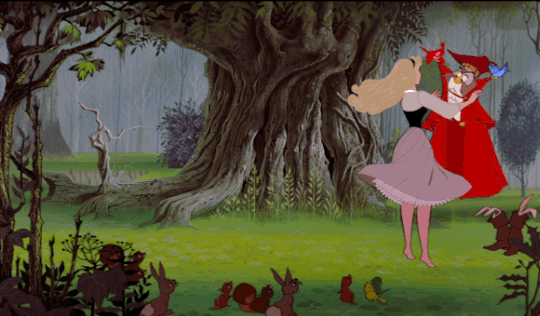
CLASS
CIRCLE OF DREAMS DRUID
This subclass is a perfect fit for Aurora. Staring with 2nd level, she gains the Balm of the Summer Court which lets her pool her fey magic to heal others. At 6th level, she can cloak the place she’s sleeping in. Flavor this as her throwing up a wall of thorns, and she’ll sleep soundly protected by fey magic. At 10th level, she’s able to open magical doorways and teleport with her magic. If you want to invoke Kingdom Hearts, you could even say she uses her Princess of Heart powers to open doorways between worlds. Finally, at 14th level, Aurora gains the ability to transmit messages while she dreams, or walk into other people’s dreams, allowing her to deliver messages from the other side of the world to her allies, making sure she can warn people of Maleficent’s plans long before she could ever hope to reach them. But surely, the wildshaping is a problem? Aurora can’t turn into animals? That’s true, but Tasha’s gave us an answer to that. Rather than wildshaping, Aurora can use her wildshape points to instead call upon a Wild Companion, which summons fey in the forms of beasts to aid her, allowing Aurora to be flanked by fairies/animal companions in battle.
While not mandatory, a 1 level dip into Life Domain Cleric can improve Aurora’s healing abilities if you want to bolster that aspect of her build. Since the final ASI as a Druid will come at level 19, she’ll have a level to spare. She’d also get the chance to pick up a few good Cleric spells to boot such as Command, Guiding Bolt, or Sanctuary.

SIDEKICK
PIXIE PRODIGY SPELLCASTER
Tasha’s introduced the sidekick feature which allows for a simpler character build to accompany PCs in a campaign. Your sidekick can be any creature type with any CR of ½ or lower. To invoke the Good Fairies of Flora, Fauna, and Merryweather, we’ll give Aurora a Pixie. Pixies are small fey with innate spellcasting which it casts with Charisma. The Pixie can be made a Prodigy Spellcaster which gives it access to the Bard and Warlock spell list, and has it cast with Charisma. Because both Bards and Druids have healing spells, that allows them to share the burden of designated team heal bots.

Aurora’s Spell List
Cantrips Create Bonfire Frostbite Mold Earth Thorn Whip
1st Level Charm Person Cure Wounds Entangle Faerie Fire Sleep
2nd Level Animal Messenger Healing Spirit Lesser Restoration Misty Step Summon Beast
3rd Level Aura of Vitality Call Lightning Conjure Animals Summon Fey
4th Level Conjure Woodland Beings Grasping Vine Ice Storm
5th Level Greater Restoration Mass Cure Wounds Wrath of Nature
6th Level Conjure Fey Heal Wall of Thorns
7th Level Fire Storm Plane Shift
8th Level Antipathy/Sympathy
9th Level True Resurrection
If you choose to add the 1 level of Cleric, change Cure Wounds into one of the 6 Cleric spells Aurora can prepare, and then add the following from the Cleric spell list. Cleric 1st Level Command Cure Wounds Detect Magic Guiding Bolt Shield of Faith Sanctuary

At first, I didn’t want to give Aurora too many damaging spells because it seemed out of character for someone so passive, but then I realized that would make playing her a bit boring. So I compromised and made her list mostly utility, healing, and general support, but added in elemental magic to invoke Kingdom Hearts and the three main types of magic used by keyblade wielders: Fire, Blizzard, and Thunder. It’s also why she can cast Plane Shift, to return the heartless to their own dimension. If you’d rather build Aurora as a support caster, that’s perfectly fine, but I didn’t want her to seem too boring to play as, having no strong damaging spells with which to actually help her party in combat.
186 notes
·
View notes
Text
Making Another Disney Princess DnD Party

SNOW WHITE THE FAIREST OF THEM ALL
Race: Human Background: Noble (History, Persuasion) Class: Shepherd Druid Totem: Unicorn Skills: Animal Handling, History, Medicine, Persuasion
Frankly, it’s troublesome to say Snow White is any level of wise, but this build fits her quite well. As a Unicorn Totem Shepherd Druid, Snow White is an impressive healer whose abilities cater to summoning animals to do her bidding, such as cleaning her house or baking her a pie. The lack of proficiency in Insight is by no means an oversight, and if I could make her a druid with a low wisdom score, I’d do it. But then, The Evil Queen likely has a very high Deception score.

CINDERELLA THE BELLE OF THE BALL
Race: Human Background: Urchin Class: Archfey Warlock Skills: Arcana, Deception, Sleight of Hand, Stealth
Honestly, Cinderella doesn’t have a whole lot of skills that translate to DnD, but she did get into the prince’s ball without an invitation in-hand, pass herself off as a noble, and then slip away from an entire legion of royal guards without being caught, so I gave her some rogue-ish skills. If you want to add some rogue levels to add to this, be my guest. It might make her more interseting as a playable character having her be a Roguelock.

RAPUNZEL THE FLOWER OF CORONA
Race: Variant Human Background: Noble (History Persuasion) Class: Valor Bard Feat: Tavern Brawler Skills: Acrobatics, Athletics, History, Performance, Persuasion
Rapunzel’s ability to use magic stems from singing incantations, so it makes sense to use her Bardic Magic Secrets to pick up healing spells for her Sun Incantation and cursing spells for her Moon Incantation. She took the Tavern Brawler feat to treat her frying pan like a weapon she’s proficient with.

MERIDA THE BRAVE ARCHER
Race: Human Background: Noble (History, Persuasion) Class: Beast Master Ranger, Champion Fighter Feats: Crossbow Expert, Sharpshooter Skills: Animal Handling, Athletics, History, Persuasion, Survival
You can choose to multiclass Merida’s build or dedicate your build entirely to either option, but the focus is on making Merida a skilled markswoman who fights with a bow. The Beast Master lets Merida have a bear, since that’s a cornerstone of her film’s plot, but the champion fighter is more likely to hit a deadly accurate shot with Improved Critical and/or Superior Critical.

ELSA THE SNOW QUEEN
Race: Variant Human Background: Noble (History, Persuasion) Class: White Dragonborn Sorcerer Feat: Elemental Adept (Cold) Skills: Arcana, Deception, History, Performance, Persuasion
I wish there was a better fit for Elsa’s build, but her magic is hereditary and ice-themed. This is the only way to do it, besides making her a Frost Giant Soul Sorcerer. Between them though, Draconic Bloodline makes her cold magic better for her. Thanks to the new Transmuted Spell option for Metamagic, Elsa can turn all of her spells into cold-damaging spells, helping to flavor Elsa as a purely cold-based caster.
700 notes
·
View notes
Text
Making A Disney Princess DnD Party

MULAN THE HERO OF CHINA
Race: Human Background: Soldier (Athletics, Intimidation) Class: Battle Master Fighter Skills: Acrobatics, Athletics, Intimidation, Perception Tools: Caligraphy
When it comes to fighting with brains over brawn, this is hands down the best subclass to pick for the fighter. There’s room to argue about the Champion, or even the Way of the Ascendant Dragon Monk, but the Battle Master gives Mulan a lot of flexibility in combat to gain the upper hand over her opponents. With so many tricks up her sleeve, Mulan can approach every combat encounter like a proper tactician.

BELLE THE BRILLIANT BOOKWORM
Race: Human Background: Sage (History, Arcana) Class: Artillerist Artificer Skills: Arcana, History, Investigation, Perception
I did consider the Order of the Scribes for Belle, as that entire subclass is fixated on the Wizard’s relationship with their spellbook. However, Artificer just felt like the right choice for Belle in DnD. As the daughter of an inventor in the 1991 film and an inventor in her own right in the 2017 adaptation, the scientific angle of the artificer was more welcoming than the magical aspect of the wizard. I chose the Artillerist because it has the most mechanic inventor vibe of the options, but she could definitely work as an Alchemist as well. But as she and her father dabble more in machines than concoctions, it just seemed more fitting for her to be an artillerist.

AURORA THE SLEEPING BEAUTY
Race: Variant Human (+1 WIS, +1 DEX) Background: Noble (History, Persuasion) Class: Dreams Druid Feat: Fey Touched (+1 WIS) Skills: Arcana, Animal Handling, History, Performance, Persuasion
Thanks to Tasha’s, the Druid’s wildshape has been altered to being able to summon wildshaped fey to aid you instead of taking the form yourself, making Druid a lot more malleable with character builds. As a Dreams Druid, not only is Aurora well-suited for healing her friends, but she has access to fey magic fitting her fairy-heavy story, and she can literally walk through dreams, meaning that putting her to sleep is a great way for her to transmit a message to others.

ARIEL THE LITTLE MERMAID
Race: Variant Human (+1 CHA, +1 DEX) Background: Noble (History, Persuasion) Class: Fathomless Warlock Feat: Inspiring Leader Skills: Athletics, History, Performance, Persuasion
For this build, I did consider having Ariel be a bard because her voice has actual magical properties. Ursula uses Ariel’s voice to brainwash Eric. However, Ariel is a human, and on land. By the movie’s logic, she’d be mute, and unable to sing. So, I decided to buck the expectations for her build, and made her a warlock working for Ursula. It keeps Ariel’s nautical theme while giving her something unique to play around with. You can make her a Triton if you want, but she’ll get underwater breathing from her subclass anyway. But if you’re dead set on building Ariel as a Bard, go for the Glamour Bard and fill her spell list up with charm spells, and lighting, thunder, wind, and water-related spells to invoke the lore of mermaids summoning sea storms.

JASMINE THE JEWEL OF AGRABAH
Race: Human Background: Noble (History, Persuasion) Class: Assassin Rogue Skills: Acrobatics, Deception, History, Insight, Performance, Persuasion Tools: Thieves’ Tools, Disguise Kit, Poisoner’s Kit
As temping as it would be to make Jasmine a genie warlock, to my knowledge she has never been in possession of Genie’s lamp. But she has shown herself to be an adept liar, actress, and acrobat, keeping up with Aladdin, concealing her identity from her own royal guards, and deceiving Jafar to great effect. This makes her a fairly good fit as a Rogue. I chose the Assassin subclass because Thief wasn’t a great fit, and the Assassin deals with false identities which Jasmine does numerous times in the film. But if you absolutely must build Jasmine as a Genie Warlock, choose the Djinni variant housed in an oil lamp.
808 notes
·
View notes
Text
The “Necromancy is evil“ we see in most fantasy worlds stems from a christian view of having to honor the body after death in a certain way to ensure the soul’s safety in the afterlife. And while I encourage you to explore societies that don’t see necromancy as evil, I also encourage you to explore societies that see necromancy as evil for different reasons.
Drow might believe that after death, your body belongs to Lolth and must be fed to spiders. Reanimating a body means stealing from Lolth and must therefore be punished.
A Zoroastrian inspired society might believe that with death, evil starts infesting the body, so dead bodies must be kept away from the community, and reanimating them keeps them in the community and is therefore bad.
26K notes
·
View notes
Text
Hey everyone! I'm part of a D&D 5e Fight Club Discord server, and I figured I'd advertise it here in case anyone is interested.
Awakened in a world not your own; A town of heroes and gods under the everlasting shade of a dark tower; A promise of reaching your ultimate potential. You may have been an adventurer, but you are now a fighter for the lords, trapped forever inside our realm until you heed our call.
Welcome to 5e Fight Club.
The 5e Fight Club is a Dungeons and Dragons 5th Edition play-by-post game based on a unique player-versus-player advancement system with an optional, yet relevant, roleplay aspect heavily inspired by the sandbox style of a West Marches campaign. Players can enter FC with characters of their own and fight other characters in a multitude of configurations to gain experience points and gold in order to grow more experienced both as the characters and the players themselves. When coming in, players must realize that FC is not a traditional D&D game in the slightest, and the way it functions is very much different from any other game you might participate in. Still, FC is a great place to learn the 5th Edition system and character design from both a mechanics and storytelling standpoint.
Combat occurs in a random environment with optional settings overseen by a Ref who acts as the DM. You can also join group events such as Battle Royales, Raids, and Tournaments. We frequently use homebrew content created by our official homebrewer as well as a wide array of outside material, most of it playtested before approval. And lastly, RP includes plenty of interesting characters, a unique world to experience and countless anecdotes that you will learn about both in and out of character.
In summary, FC is a community of players and DMs who collaborate together to create a unique D&D experience and just like with any other D&D game, you’ll be sure to meet some amazing people.
Interested?
Welcome aboard:
Hope to see you there!
4 notes
·
View notes
Text
Well it sure happens now!
I wonder if multilingual dnd characters work like multilingual people irl
Character 1: hey can you pass me the (demonic screeching)
Character 2: (visibly disturbed)
Character 1: (takes mundane object out of character 2s hands) sorry I forgot the word for it in common…
134K notes
·
View notes
Photo

If you’re ever looking for stuff for your players to do, maybe just give them a boat and see what they do. What’s fun about this scenario is you also get a rare chance to see just how much your friends know about boats, and eventually you can transition your stupid game about fighting dragons (which don’t even really exist) into a sailing adventure that focuses on safely navigating the seas and delivering cargo in a timely manner. Your players might not think this is a lot of fun at the beginning, but I’m confident that after their first trade route is completed they’ll have learned a thing or two about how boats work, and at the end of the day isn’t that all that really matters?
Download the full resolution image of this map at my Patreon, as well as alternate gridless, night, and outlines-only versions!
440 notes
·
View notes
Photo
I really like this one

Adventure: The Tragic Affair of the Governess’s Daughter, and the Conquest of Port Calmayne
Setup: Port Calmayne is one of the most prosperous settlements in the vast horizon, a stretch of ocean and jungle islands that bridge the far sea between two distant continents. Situated on a number of trade routes, the port was established by an independent merchant company and thus owes no allegiance to any thalassocratic powers, encouraging ships of any nation to dock and trade within. The only restriction to this generous harbor policy is ships owned by free-traders ( or to be more blunt, pirates), who are restricted from trading in Calmayne’s waters or market as part of the treaties that protect the freeport’s safety and interests on foreign shores.
Adventure Hooks
While ashore at one of Calmayne’s many markets, the party is almost bowled over by a hooded young woman running as fast as she can through the freeport’s crowds. As they help her up, she looks through the crowd and sights her pursuers, begging the party to help her escape, but not to be violent in doing so. If they aid her, she will later introduce herself as young Irrica Calmayne, daughter of the port’s current Goveness and granddaughter of the original Captain Calmayne, who founded the port and gave it his name. Though she is a woman grown, her mother has strict expectations of her young daughter, and has restricted her from mingling with the commons in the port. Despite the Governess’s best efforts however, Irrica has made a habit of sneaking out and has ended up falling in love with a dashing Sea-Captain who frequently makes harbor in Port Calmayne. Would the party be brave enough to help her avoid capture, and escort her to a rendezvous with her beau?
Turning Irrica in to her mother could earn the party a sizable bounty, to say nothing of various favors Governess Calmayne could do for a party of sailors and merchants in need of work. Letters of reccomendation for a position on the best ships? Passess to ports across the Vast Horrizon? Perhaps even a lead on where the party might comission a ship of their own.
Irrica’s lover is indeed dashing, a handsome smuggler by the name of Captian Jacobie who’s daringly draping shirt reveals tattoos of circling sharks. He’s delighted to be reunited to her, and announces his plan to elope with the Calmayne heiress next time he returns to port. Since they’ve already helped her out twice, surely the party would be brave enough to help the cause of young love. In return, he’ll give the party privlaged access to the goods he’s smuggled into the harbor, including a small arsenal of magical items “salvaged” from sunken navy ships.
Keep reading
365 notes
·
View notes
Text
The Unappreciated Importance of D&D
I think more people should be talking about how Dungeons and Dragons and other tabletop roleplaying are unintentionally great educational tools. Not necessarily traditional education like maths and reading, but social education. Think about it:
Want improve your puzzle solving skills? A lot of campaigns encourage critical thinking.
Want to become a better storyteller? As a GM you get to form the world your players exist in and as a player you get to flesh out that world and your character, giving you a free space to expand as you improve.
Want to get better at thinking on your feet? RPGs are basically all improv, so you’ll learn to react fast.
Want to make new friends and improve your social group? RPGs bring loads of people together with an existing common interest. A good RPG group lets you interact while being kind of goofy and unapologetically embracing what you love.
I’m sure there are other advantages too, but these are the ones that spring to mind right now. These games aren’t just fun, but potentially very helpful to a lot of people.
734 notes
·
View notes
Note
How much do you think through a map before any drawing is done and/or Do you have advice on how to first put a map to paper? I tend to freehand the initial coastlines searching for something that "feels right," but it often leads to times where I'm erasing/redrawing the same spot over and over. Very quick sketches on scratch paper help with the big picture, but less so for the tiny details. Any tips? Thanks!
Short answer
The amount of planning varies a LOT depending on the map (from zero planning to having shapes and features I need/want, to making a map that overlaps or duplicates a map that already exists and therefore has very specific requirements).
However, in all cases I basically never plan my small details (especially regarding coastlines!).
I recommend not overthinking coastline details and shapes. There isn’t really a way for a coastline to be “wrong” as it were! There is an extremely wide variety of shapes and styles of coastline in the real world and the looser you are with them (I find) the more real they end up looking! So basically, I freehand both the general shapes AND the details.
My main advice is to try to avoid overthinking, to avoid doing “sketchy” drawing and instead lift your pencil off the page as little as possible, and to start with very big scale features that you need before you worry about placing the smaller ones (i.e. landmass > mountain ranges > Lakes/rivers > settlements) and only start with smaller ones in place IF you already know you need them somewhere specific (otherwise find where they fit afterwards).
Long Answer
I put together a video showing how I do my coastlines and discussing how I plan and incorporate planning/existing world-building details into making a map:
youtube
(If anyone has any GMing, player, geology or map-making questions my ask box is always open and I'm happy to try and help!)
139 notes
·
View notes